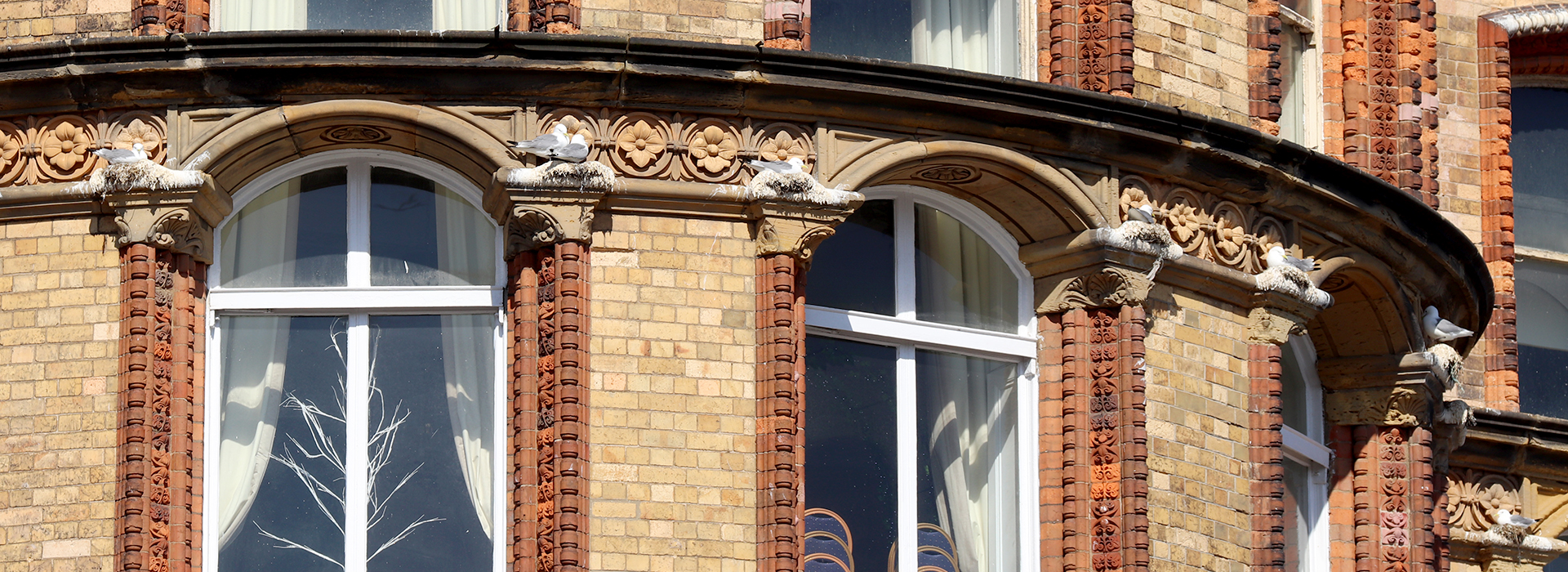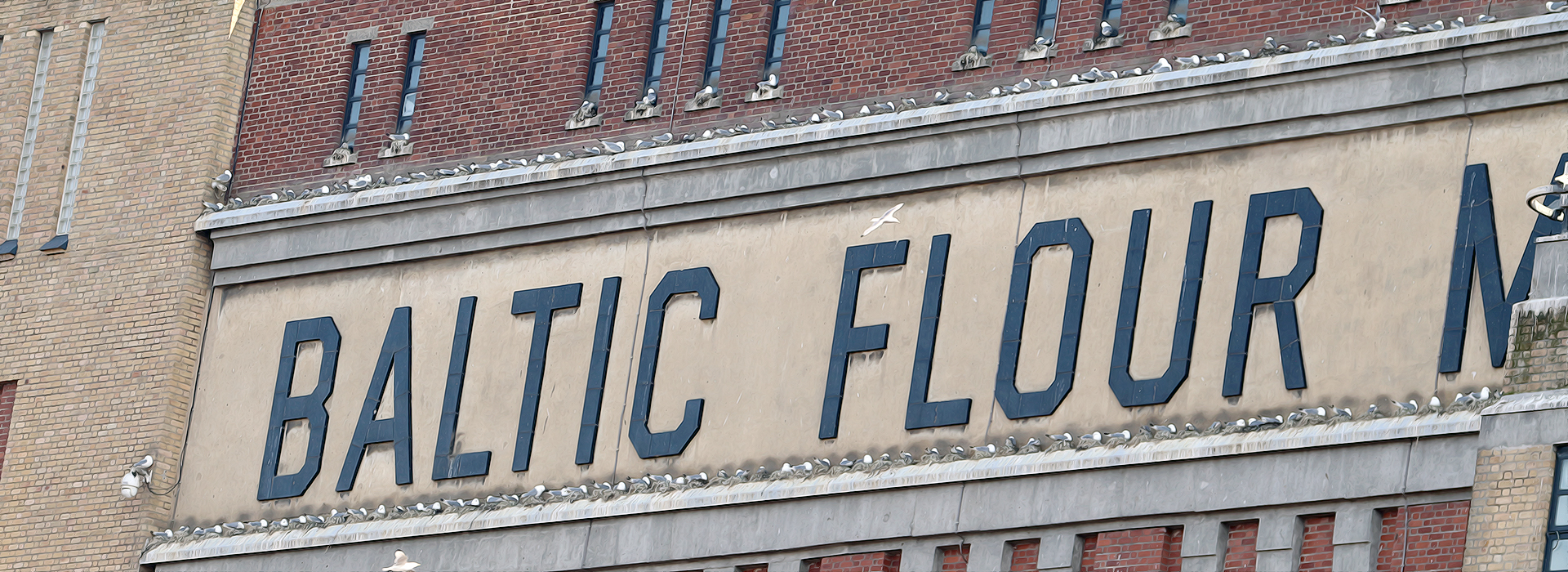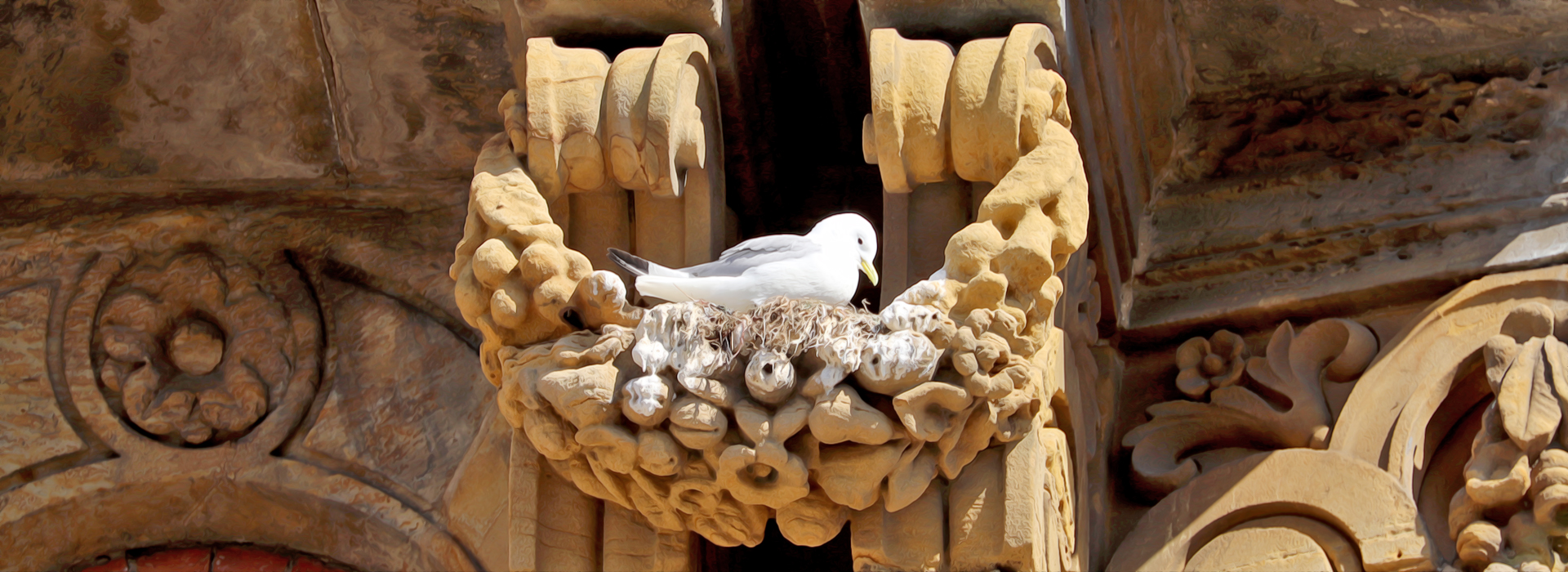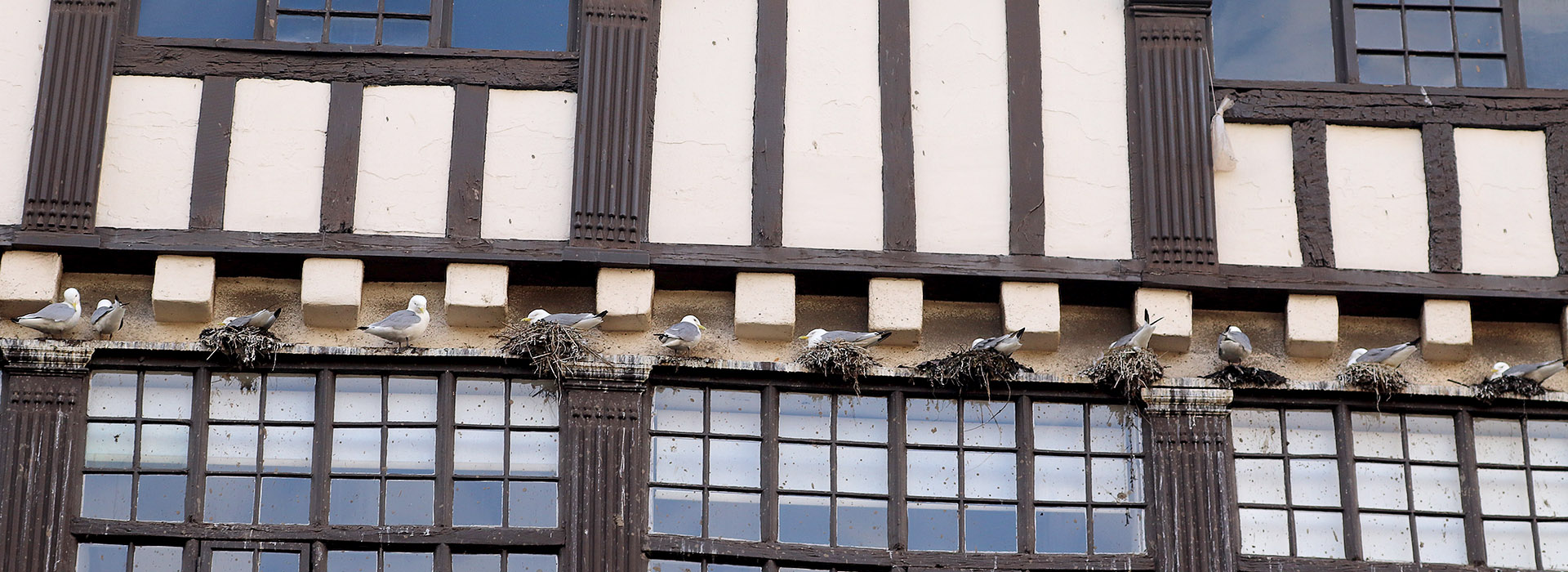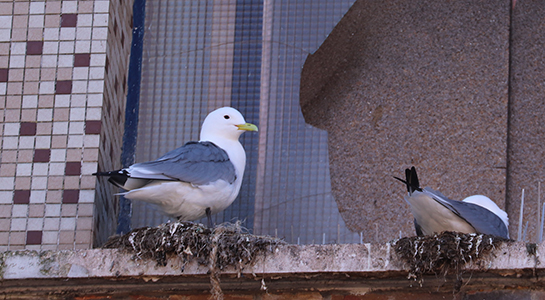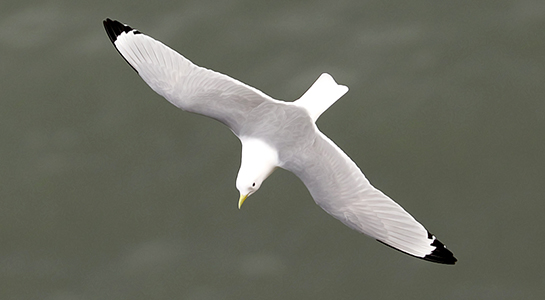Over the past fifty years, coastal populations of Kittiwakes have dived, as weather patterns have changed, erupting into more severe wet and windy storms more frequently. Even seabirds such as the Kittiwakes that spend their entire lives out at sea are not immune from the impacts of strong winds and rain; as their feathers are not 100% waterproof. Adults and fledglings, can be lost as they suffer from hypothermia.
Availability of Food
As our climate is changing, Ecosystems which involve our natural environments, including all the flora and fauna that live and interact within that environment; are dramatically changing. As temperatures in our seas and oceans warm, phytoplankton initially grow more abundantly, providing an ample food source for zooplankton. However, as temperatures continue to rise, the zooplankton population grows at a faster rate than the phytoplankton in the warmer water. This imbalance creates a bottleneck in marine ecosystems, disrupting the distribution of food sources and nutrients available within the environment.
“Big news for seabirds as campaign to close the English North Sea
and Scottish waters to sandeel fishing succeeds.” » Read More
Additionally, as fishing practices become more efficient, the sustainability of populations of small shoaling fish like our Sand Eels, which feature regularly in the diet of Kittiwakes and other seabirds are being compromised.
Pollution
The quality of our seawater has a direct impact on the huge variety of marine life that lives in the sea. As our climate continues to change the chances of further pollution being deposited into our rivers and seas, may rise as episodes of high rainfall could occur more frequently and aggressively, which could potentially become even more damaging.
“During 2022, news headlines exposed a large portion of UK water companies, that were
out pouring pollution into our rivers and the seas, regularly during high rainfall periods”.
Since the millennium dawned, Kittiwakes have continued to explore and expand beyond their coastal cliffs, whilst choosing their location as a breeding habitat. They are moving into our coastal towns and cities where they are more sheltered from battering winds and heavy rain. Access to a source of food such as Sand Eels will remain essential to sustain these new colonies as they continue to develop.
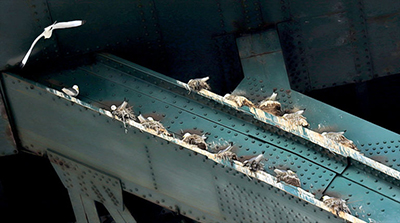
Pairs of Kittiwakes nesting on the Tyne Bridge
in Newcastle & Gateshead, Tyne & Wear.
- River Tyne in the North East of England – the famous Tyne Kittiwakes are travelling eleven miles inland, where over one-thousand pairs now build their nests every year on the historic Tyne Bridge and along the roofs of nearby buildings.
- Scarborough in North Yorkshire – Another colony climbing now beyond five-hundred pairs is well established on the Grand Hotel in the coastal town of Scarborough. More pairs are building their nests on nearby town buildings such as the popular local Waterstones. Whilst on the Spa Bridge, to the surprise of local conservationists, the local councils are attempting to evict almost 300 pairs. This is despite recent efforts to protect the Spa Bridge colony during recent refurbishment work of the bridge.
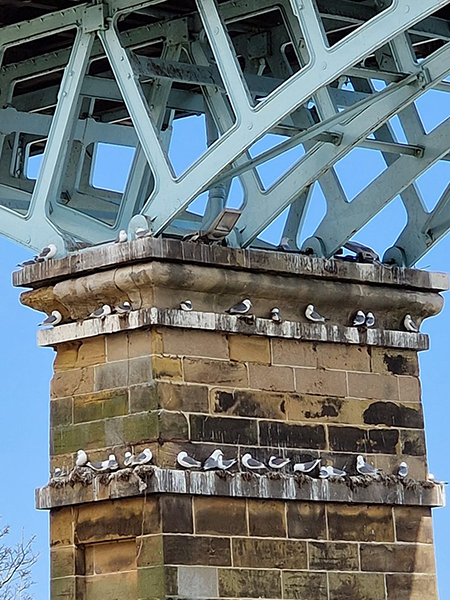
- Lowestoft in South Suffolk – The situation is being mirrored down in Lowestoft in Suffolk; however local support to help retain the nesting Kittiwakes has been so overwhelming for some of the owners of the local buildings, they have actioned efforts to see how they can help. Platforms have been erected to actually provide space for the Kittiwakes to build their nests. A local group is attempting to formalise their work; however, efforts so far have been stalled as local councils, conservationists and wildlife organisations have been unable to agree on a practical way forward. Some funding has been raised however and it is hoped they will succeed.
- Mumbles Pier, Swansea Bay in Wales – A coastal colony which is under threat again. This time from strobing Ferris Wheel light ; which does not have planning permission even though its been in place since February 2024 .
Kittiwakes nesting in Scarborough in North Yorkshire on the Spa Bridge
Coastal colonies such as Tynemouth in North Tyneside, Marsden Rock in South Tyneside and Bempton Cliffs in North Yorkshire continue to experience more severe weather patterns. The new colonies in our cities and towns are becoming a refuge for our Kittiwakes to nest. Access to a sustainable food supply like their Sand Eels however and a pollution free environment will be essential to secure their long-term future. There is also a need for tolerance and understanding from those of us that live and visit where the Kittiwakes themselves are choosing to nest.
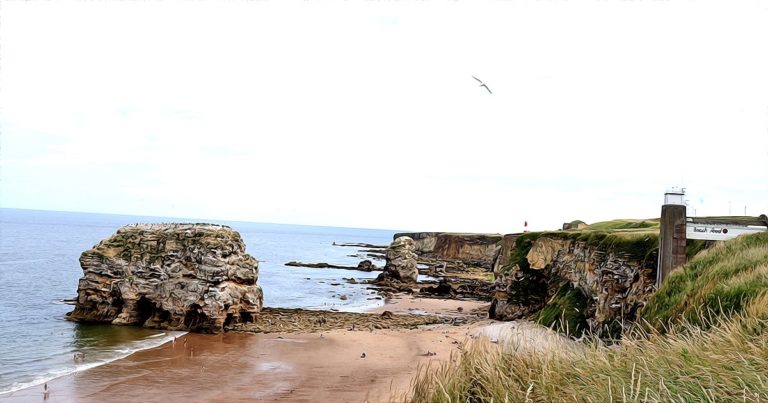
Marsden Rock in South Tyneside, Tyne & Wear
“Sadly, we have lost over 40% of our Kittiwakes already as their story continues to unfold”.
Kittiwakes are » Red-Listed . Red is the highest conservation priority with species needing urgent action. There is an increasing need to help safeguard existing birds and secure and protect their nesting sites. When looking at the Seabird population data, this evidence strongly points to the need help conserve and protect our declining seabirds.
Anti-bird Deterrents
Not everyone is keen to host a colony of nesting seabirds; with many concerned about any noise/waste produced during their time with us every spring and summer as birds return to nest.
“Building owners and local councils install anti-bird deterrents in an attempt to deter birds from nesting”.
Netting
A variety of netting is used to attempt to prevent/persuade birds from nesting by blocking off specific areas on buildings. Evidence has proved, that this method regularly fails to stop birds nesting; however as they attempt to nest on top of netting or as netting becomes damaged over time, birds can become fatally trapped in the netting.
“In 2018 on the Quaysides of Newcastle upon Tyne and Gateshead there were over
twenty Kittiwake casualties as a result of anti-bird netting installed on several buildings.
Following a local campaign, netting was removed”.
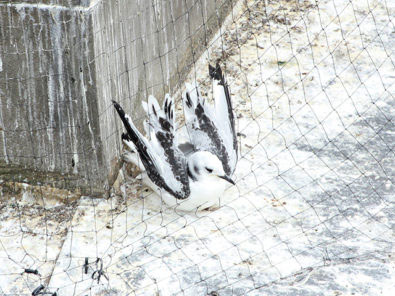
A Tyne Kittiwake Trapped in anti-bird netting during
the 2018 breeding season on Newcastle Quayside by Paul Buskin
A new group; » Kittiwakes upon the Tyne, now exists to help raise their voice to look out for the local colonies of Kittiwakes along the River Tyne.
Spikes
Long sharp spikes, that spoil the visual appearance of buildings. Evidence has shown that these in many cases fail to prevent birds nesting; as in the photo below from the Brunswick Shopping Centre in Scarborough, they often use the spike to build their nest around. Birds do become injured however, as the interact with the spikes; at times fatally.

Kittiwakes in Scarborough nesting on Anti-bird spikes on the Brunswick Shopping Centre
Bird/Fire Gel
To a bird the harmless (and invisible to the human eye) Ultra Violet (UV) light projecting from the non-toxic Gel is seen as a flame and hence a hazard to avoid. There is some evidence this causes birds to react initially and avoid the areas where it is present more. However, over time their desire to nest overcomes such fears and they nest around the gel; often without any reduction in numbers that year.
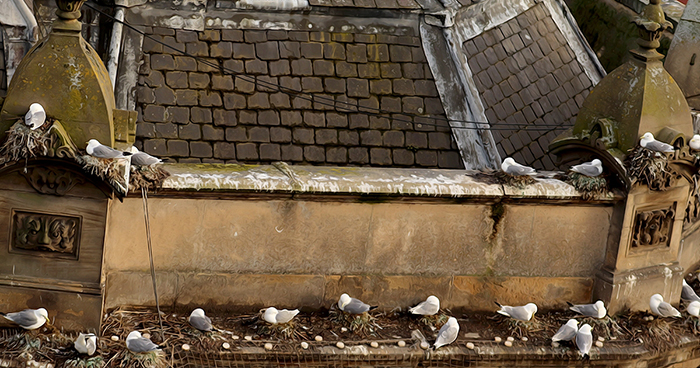
Kittiwakes nesting on Phoenix House on Newcastle Quayside, amongst anti-bird gel.
Avi-shock
Low voltage electric deterrent which delivers a harmless but disconcerting electric pulse. This modifies the birds’ behaviour by stimulus rather than by installing a physical barrier.
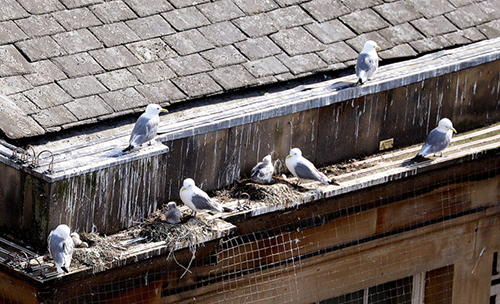
Kittiwakes nesting on The Guildhall On Newcastle Quayside on top of Avi-shock
Fake Raptors
Model birds of prey installed on buildings.
What the future holds?
What is causing our climate to generate more severe weather patterns? What are the greatest threats to food sources for Kittiwakes such as Sand Eels? Where does the pollution come from that damages our ecosystems in our rivers and seas?
Will we accept responsibility and attempt to reverse the unfolding events? Or will our great grand children read about them like they do the Dinosaur’s and the Great Auk?
